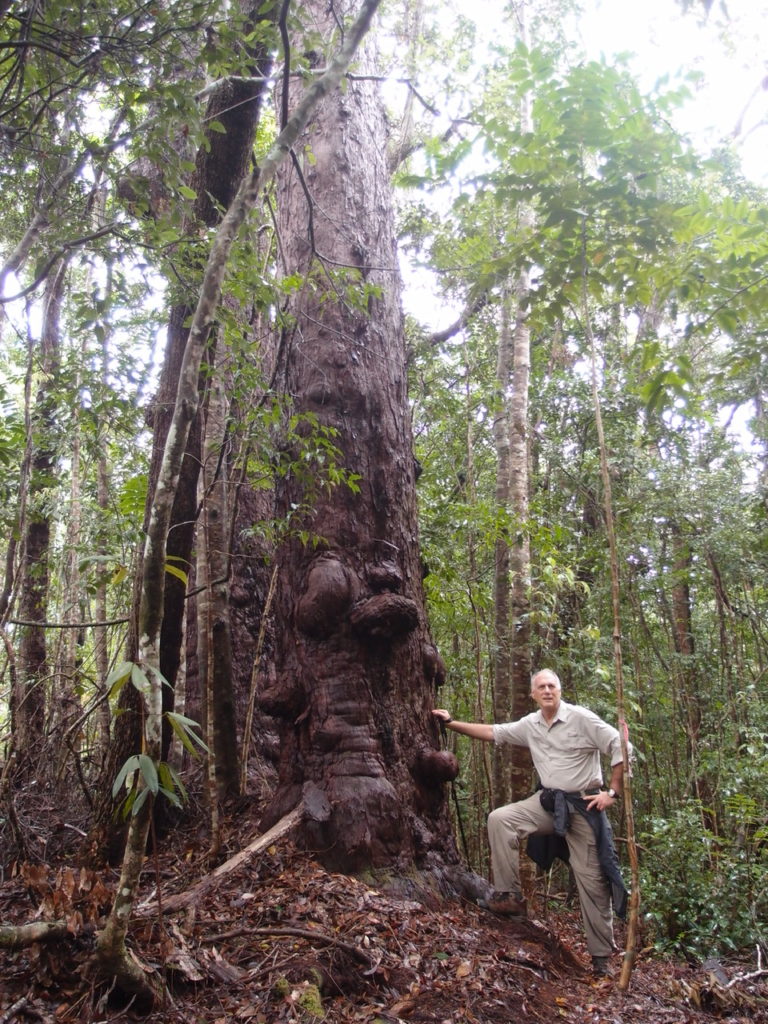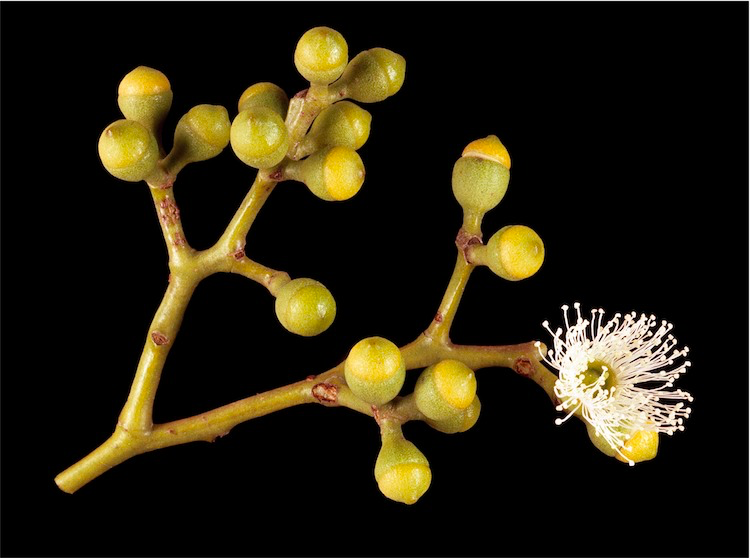Although the rainforest around Paluma is extensive, covering over 42km2, it forms a narrow north-south band that changes to eucalyptus dominated sclerophyll forest as one travels east down the range or west towards Hidden Valley. The border between rainforest and sclerophyll forest is not fixed, and some studies have shown that the rainforest is slowly expanding and encroaching on the ecologically important sclerophyll habitats that host a number of important species of plants and animals. Late last century there was concern that rainforest expansion might be an ecological threat to adjacent forests but more recent work shows that the rate of expansion is very low, and current climate predictions for destructive cyclones and increased bushfire severity in the region suggest that rainforests are the more threatened of the two habitats.
Some evidence of past rainforest encroachment can still be found along some walking tracks, where there are huge old Eucalyptus trees that would have germinated in open forest have survived the fierce competition for light that characterises rainforest habitats and now stand as anomalous reminders border dynamics. This series has already highlighted two sclerophyll trees that can be found near rainforest margins (Eucalyptus grandis and Syncarpia glomulifera). A third species is the Messmate (Eucalyptus cloeziana).

The track down to Triple Falls from the H-track has some magnificent old messmate trees in an area just adjacent to open forest at the crest of the escarpment. This tree is endemic to eastern Queensland and in ideal conditions can grow to 55m in height. The lower trunk has rough flakey or fibrous bark, but is smooth on the upper trunk and branches. Leaves are lanceolate to ovate 0.2-1.3cm long. Flowering occurs has been recorded in December and January. The mature gum nuts are globose to hemispherical, 0.4–0.7 cm long, 0.6–1.1 cm wide.

Messmate has been logged over most of its range and is now cultivated in plantations. It has been imported to Africa and is one of the more important general purpose hardwood plantation trees in Zambia and Zimbabwe.
The species name (cloeziana) was chosen in honour of Francois Cloez, a chemist who originally identified the chemical cineole as the major constituent of eucalyptus oil.
Text and photos (unless indicated) by Jamie Oliver
